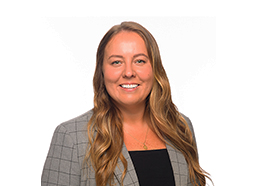Automation reduces time and costs for global timeshare company’s tax function
2 weeks
Tax team’s time freed for variance and diagnostic research
60 hours
Time per month saved for the indirect tax team
1 week
Time saved in the year-end financial closing process
At a glance
Client
Global timeshare company
Industry
Timeshare
Our role
Increasing tax function accuracy, efficiency
Our solution
Developing and executing a tax technology roadmap
Scenario
Data volume, disparate systems hinder tax team
A global timeshare company headquartered in Florida, with a presence in over 10 countries and multiple U.S. locations, had grown through acquisitions and retained multiple legal entities. This structure, which consisted of over 90 subsidiaries, complicated the company’s tax provision and compliance obligations, and generated specific challenges for the tax team:
- The company had a short year-end close period, and the accounting team had an extensive number of post-close adjusting journal entries.
- The in-house tax team needed to gather a high volume of data across multiple national and local jurisdictions in order to prepare tax returns to comply with indirect tax reporting obligations.
- The tax team had to aggregate disparate financial data sources needed to calculate taxes, which was both time-consuming and created a greater risk of errors.
As the accounting team continued posting adjustments throughout the close period, the tax team had to refresh the provision and make real-time updates to the calculations. This not only heightened the risk of tax-related errors that could be discovered during an audit but also created challenges between the tax team and the accounting team, and hindered workflow. Management was hesitant to update its subsidiaries’ data for fear of inadvertently changing the tax provision. They needed a more controlled process to isolate and refresh any data that had changed.
Furthermore, the tax team had limited visibility into their data, which resulted in missed opportunities to analyze it and contribute strategic and proactive observations and recommendations around efficiencies and tax planning opportunities that could improve the company’s tax position.
The timeshare industry also has several unique tax filings on the indirect side, which the indirect tax team handled manually. As such, reports from various systems were downloaded and analyzed each month. Certain Information was extracted from each of the reports and manually layered into a consolidated template to assist in the return preparation process. The legacy process, being very manual, was prone to errors and was incredibly time-consuming. Since these filings are due monthly, there was constant pressure to complete this workpaper preparation process, have the appropriate individuals review the workpaper and file/sign the returns all prior to the deadline.
An additional concern was that the size of the tax department had not grown in proportion to the company’s new, larger size. A new tax technology leader had been hired and was open to adopting and implementing new tax technology, but the company had only recently begun forming a tax technology strategy.

“Gathering and processing tax data from 90 different entities can be a challenge for any tax department. Automating post-financial adjustments made the direct tax process faster and more accurate.”
Approach
Relationship leads to analysis and a tax automation roadmap
Grant Thornton had an existing relationship and provided traditional tax compliance services for the company. We observed pain points the internal tax team faced and introduced our tax technology specialists with the goal of sharing ideas to improve their tax department functions. The trust we had already established meant our client had a comfort level that was crucial during the first steps of this new engagement.
The tax technology specialists from Grant Thornton’s Tax Digital Consulting Solutions team – who had deep tax technology, process and hospitality sector experience – embarked on the project on the direct tax side by designing a solution to automate the post-close adjustment in the provision, developing and testing the solution as well as organizing a dry-run financial closing that was collaborative and in-person with our client’s tax team. Examining the processes first-hand, our team identified opportunities for improvement. On the indirect tax side, again, our team started with a close examination of our client’s current work processes to identify improvement areas. This effort served as the foundation for the next step — developing a roadmap for tax process and automation implementation to address these issues.
The automated processes required high flexibility not only to address opportunities to increase efficiencies but also to address the current skillset of the in-house tax team, which required onsite training sessions to ensure complete comfort in taking ownership and maintaining said tools. Working with our client’s new tax leader, our team created a comprehensive tax technology solution, using a data-cleansing tool and process that could:
- Extract versions of the trial balance throughout the process
- Isolate entities that had been adjusted
- Import that isolated trial balance into the tax engine.
On the indirect tax side, our approach was to implement tools the company already licensed to automate the workpaper preparation process. We accomplished this by:
- Holding work sessions with the company to understand the current process.
- Compiling a design document with a “future state” vision of the process post-automation. This component was especially critical to the overall success of this engagement since the company was not familiar with the capabilities/functionality of these automation tools and, consequently, had a difficult time articulating how a future state could look.
- Presenting the design document to the client to ensure agreement with the approach.
- Developing an automation pilot using company data to make the future state automation more tangible.
- Upon completing the automation build and after go-live, connecting the consolidated data files generated from the tool to a PowerBI dashboard to provide additional metrics and insights for executive leadership.

“By automating the workpaper preparation process for their indirect tax team, we were able to reduce the amount of work hours saved by more than a week every month.”
Result
Dashboard-driven processes boost accuracy, save time
Once our team developed and implemented the technology roadmap for the company, they experienced the smoothest year-end close since the acquisitions, finishing a week earlier than the previous year. Additional results our client experienced from our tailored solution produced enhanced workflow efficiency, including improved data processing speed, which led to faster and more accurate provisional calculations.
- In the direct tax space, automating the trial balance process with the data cleansing tool reduced manual data entry, which improved data processing speed and produced more accurate tax provision figures. As a result, our client’s in-house tax team was able to accelerate the preparation of the tax provision and reduce the risk of potential financial misstatements.
- On the indirect side, our automation efforts not only led to significant time savings for our client — approximately 60 hours a month — but also increased the accuracy of the returns by removing the manual element from a large portion of the process. Because all elements of the monthly process were automated and we had provided robust documentation on how to run the process, any turnover at the staff level did not negatively affect the monthly workpaper preparation process. The result of these efforts is that our client’s tax team saved two full weeks of time spent on this process. That freed up the team’s time to conduct additional research on any variances/diagnostics produced by the automation tool while still filing the tax returns timely, which would have been nearly impossible under the legacy process.
Related resources
Connect with our team
Content disclaimer
This Grant Thornton Advisors LLC content provides information and comments on current issues and developments. It is not a comprehensive analysis of the subject matter covered. It is not, and should not be construed as, accounting, legal, tax, or professional advice provided by Grant Thornton Advisors LLC. All relevant facts and circumstances, including the pertinent authoritative literature, need to be considered to arrive at conclusions that comply with matters addressed in this content.
Grant Thornton Advisors LLC and its subsidiary entities are not licensed CPA firms.
For additional information on topics covered in this content, contact a Grant Thornton Advisors LLC professional.
Tax professional standards statement
This content supports Grant Thornton Advisors LLC’s marketing of professional services and is not written tax advice directed at the particular facts and circumstances of any person. It is not, and should not be construed as, accounting, legal, tax, or professional advice provided by Grant Thornton Advisors LLC. If you are interested in the topics presented herein, we encourage you to contact a Grant Thornton Advisors LLC tax professional. Nothing herein shall be construed as imposing a limitation on any person from disclosing the tax treatment or tax structure of any matter addressed herein.
The information contained herein is general in nature and is based on authorities that are subject to change. It is not, and should not be construed as, accounting, legal, tax, or professional advice provided by Grant Thornton Advisors LLC. This material may not be applicable to, or suitable for, the reader’s specific circumstances or needs and may require consideration of tax and nontax factors not described herein. Contact a Grant Thornton Advisors LLC tax professional prior to taking any action based upon this information. Changes in tax laws or other factors could affect, on a prospective or retroactive basis, the information contained herein; Grant Thornton Advisors LLC assumes no obligation to inform the reader of any such changes. All references to “Section,” “Sec.,” or “§” refer to the Internal Revenue Code of 1986, as amended.
Grant Thornton Advisors LLC and its subsidiary entities are not licensed CPA firms.
Ready to talk? We’re ready to listen.
Request a meeting and a member of our team will be in touch to see what we can do to meet your needs.
Want to submit an RFP? Please submit your request through our RFP submission page.
Trending topics

No Results Found. Please search again using different keywords and/or filters.







